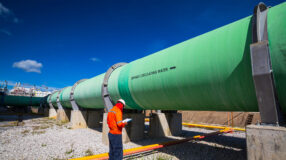Mr. Chairman and Members of the Subcommittee:
I am Donald F. Santa, president and CEO of the Interstate Natural Gas Association of America, or INGAA. Our members operate approximately 200,000 miles of natural gas transmission pipelines, representing two-thirds of the nation’s total natural gas transmission mileage and about 90 percent of the total interstate natural gas transmission mileage in the United States. The pipeline systems operated by INGAA’s members are analogous to the interstate highway system, transporting natural gas across state and regional boundaries.
Let me state at the outset that INGAA appreciates the work of the National Transportation Safety Board (NTSB) to develop pipeline safety recommendations as part of its San Bruno accident investigation. Furthermore, our association agrees with the goals served by those recommendations: to reduce pipeline accidents and restore the public confidence of the safety of the natural gas infrastructure.
Some of NTSB’s key recommendations include confirming the safe maximum allowable operating pressure (MAOP) for pre-1970 pipes, expanding and/or modifying integrity management principles beyond the current focus on populated areas, improving accident response times using both personnel and automation (such as valves), and the need for improved inspection technologies.
The NTSB recommendations are aggressive and aspirational. Still, there is much work needed to transform these recommendations into a concrete, practicable and achievable plan for realizing the pipeline safety goals that we share. INGAA advocates a phased approach that would build on the well-founded, existing approach of reducing risks to the greatest number of people in the most effective way. We believe that S. 275 accomplishes these objectives. S. 275 and a similar bill emerging in the House provide a well-considered framework for achieving groundbreaking improvements to the federal pipeline safety program. Therefore, Congress should enact this legislation this year.
Download Full Testimony Here





